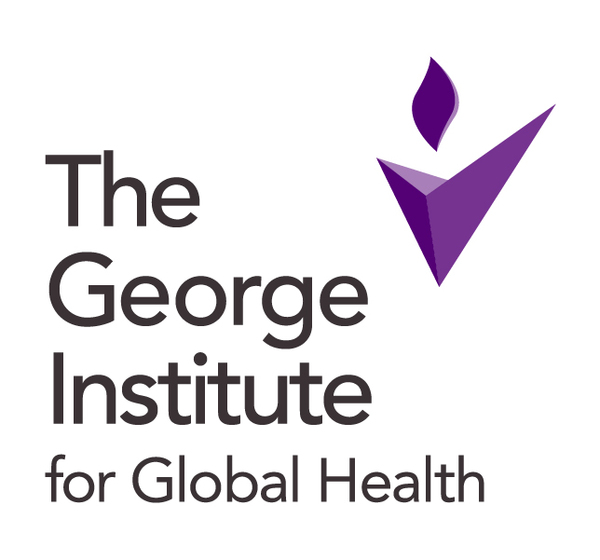The challenge
A leading medical research institute needed to ready the organisation to execute a challenging 2020-2025 strategic plan.
The solution
-
Build a new capability framework, tied to overall organisational strategy
-
Bake that framework into organisational culture through people processes, including recruitment, career and learning pathways
-
Work with leadership to identify priority leadership capabilities to build within the senior team
How it happened
The George Institute is a leading independent global medical research institute established and headquartered in Sydney, with additional major centres in China, India and the UK and an international network of experts and collaborators.
Their mission is to improve the health of millions of people worldwide, particularly those living in disadvantaged circumstances, by challenging the status quo and using innovative approaches to prevent and treat non-communicable diseases and injury.
“The George Institute really is a mission-driven organisation.” explains Erika Burmeister, the George’s former Director of Global Human Resources. “Our retention is high and staff are personally invested in the impact we have globally on the health of millions of people”
“It doesn’t matter what your job is. Whether you’re a researcher and academic, a project expert or professional staff, we all share the same mission.”
In 2019, the Institute was preparing for significant change. Its strategic planning runs in five year segments, and 2020 would mark the start of a new five year plan.
For Burmeister, that meant two questions needed answers. First, what new capabilities would be needed by people leaders and individual contributors to deliver the ambitious 2025 targets?
Second, how could she convince the organisation of the need for a more structured approach to upskilling than had been followed in the past ?
Burmeister asked HFL to partner on a series of short, pragmatic interventions. First, to develop a capability framework, then conduct a survey of current leadership capability and finally coach a series of workshops to prioritise the most urgent capabilities for action by the leadership team.
Part one: Development of a capability framework.
As the Institute had never had a capability framework, Burmeister explains, its development needed to begin with research.
“We asked HFL to identify what makes The George The George. They ran a series of focus groups and one-on-one interviews asking: What needs to be preserved? What can be done differently? What capabilities do we need to achieve ambitious 2025 targets?”
The first three capabilities were strategic.
-
Impact focused.
-
Entrepreneurial.
-
Global.
The second three were leadership capabilities, which The George Institute applies to individual contributors as well as people leaders.
-
Action oriented.
-
Compelling leader.
-
Cultivates others.
“A similar exercise had been tried in the past, but it didn’t stick. Here, we identified six capabilities that felt ‘very George’. They stuck because they resonated with who we are.”
In addition, the new framework has become the basis of new career pathways, 360 degree feedback and recruiting frameworks for Institute staff. Likewise, the George capabilities have driven development of new learning options in the Learning Management System to support the career development of Institute staff.
Part two: Survey of leadership capabilities
Burmeister’s next step was to get the leadership team’s input on which of the 6 George capabilities needed the most focus within the senior leadership group.
“The Institute is a data-driven organisation,” she says. “We knew we’d get a better reception if we kept it short, practical and George focused.”
HFL suggested a survey that asked two questions for each behaviour within each capability. How well do I demonstrate the capability? And how well does the senior leadership team demonstrate it?
By identifying the leadership team’s view of the high priorities, HFL was able to get leaders to buy into part three of its plan.
Part three: facilitated virtual leadership team sessions
The results of the survey suggested two areas for focus: seeking, giving and receiving feedback; and working in a matrix as a global team. Through three 90-minute virtual sessions, HFL collaboratively coached to the leadership team to ask itself - how could and should it improve these capabilities?
“Research is a field that encourages razor sharp focus on academic excellence. We wanted to ensure we also keep focus on cultivating people to grow our bench strength. Creating a feedback culture is a cornerstone of that. Likewise, as a growing organisation, getting our operating model for the matrix was becoming increasingly important.”
“This sort of work was new to many of the leadership team,” Burmeister explains. “HFL’s group coaching model was the most palatable, pragmatic, and cost effective pitch made to us.”
“HFL made sure the sessions worked. They weren’t about telling our leaders that things are bad or broken. It was about turning up the dial and improving.”
“Since the virtual sessions, we’ve continued the journey internally. A cross section of the team have met in stream teams to identify further actions for managing the matrix, and I’ve sent weekly nudges to the senior leadership group on feedback - a three minute video one week, an infographic the next.”
“As a global team, and particularly post COVID, there’s never time to get the entire leadership into one room, virtual or otherwise, for a day where they can practise feedback. But we can keep building interest and awareness, and we’ve also introduced an online module to help with feedback across the organisation.
“In addition, we’ve also had three of our senior leaders volunteer to participate in a 360 degree feedback process . They wanted to understand how they could improve their own capability. This is great, and we’re sure this will help gather further momentum behind the George capabilities and a feedback culture.”
What next?
“Our work with HFL has been invaluable”, says Burmeister. “I’m a generalist, my team are generalists, and the Institute is not big enough to require an internal L&D specialist. In any case, bringing in external support adds an additional level of credibility. That’s helpful when dealing with an academically focused institution.
“We’ve opened peoples’ minds to the benefits of structure and a framework to hire, develop, and retain extraordinary people. We now have a common language about how we manage people.
“It’s our first toe onto leadership development, which is where I think the capabilities will really stick. Over time we’ll get to a place where all people have a learning pathway and they can see where specific learning interventions help them develop each of the six capabilities.
“Well-defined capabilities also make us better at talent management. Now we have a better framework to identify high potentials, and to be really targeted in their development.
“I was very, very pleased to be able to partner with HFL on this and I look forward to future collaborations.”




